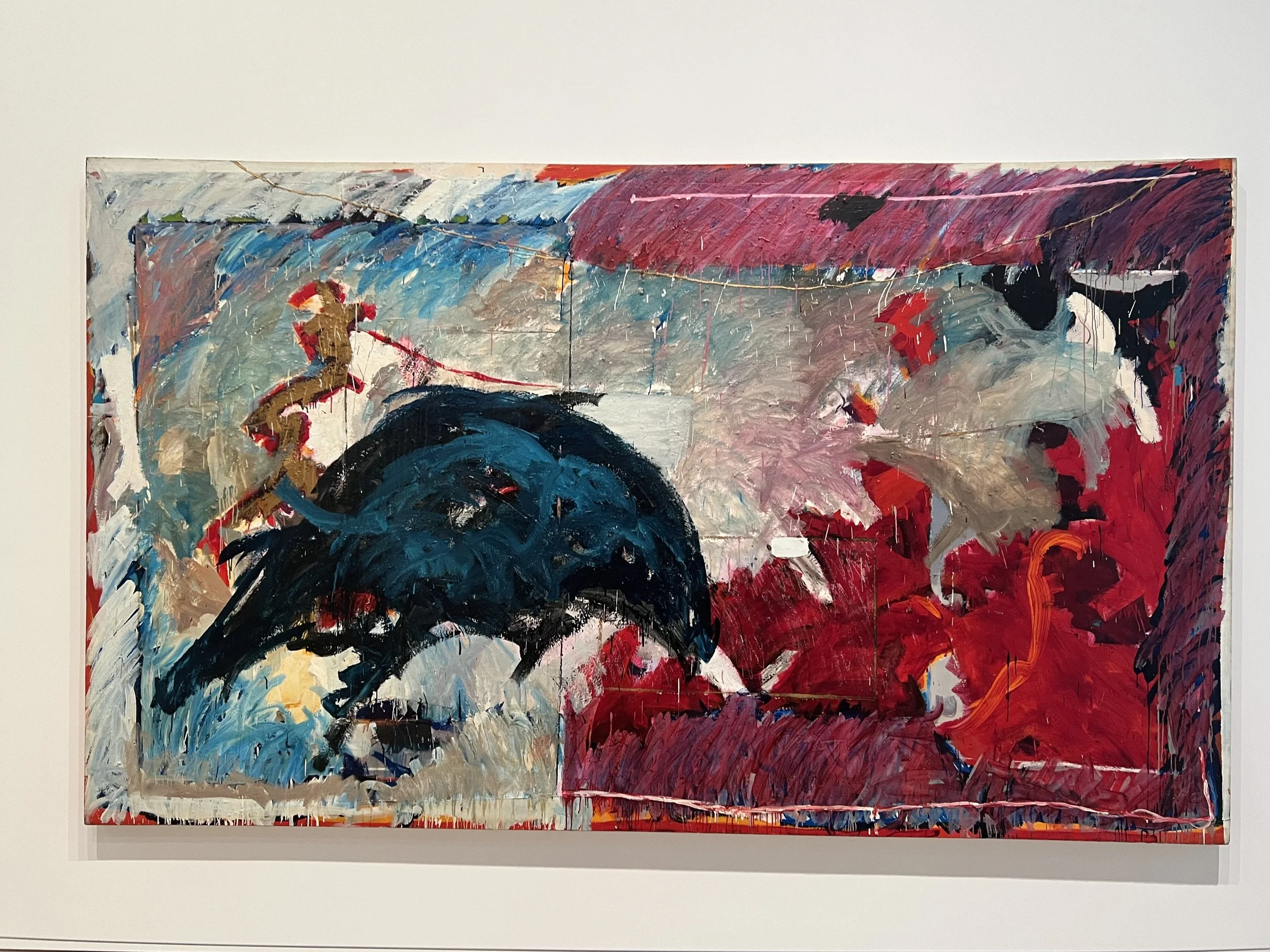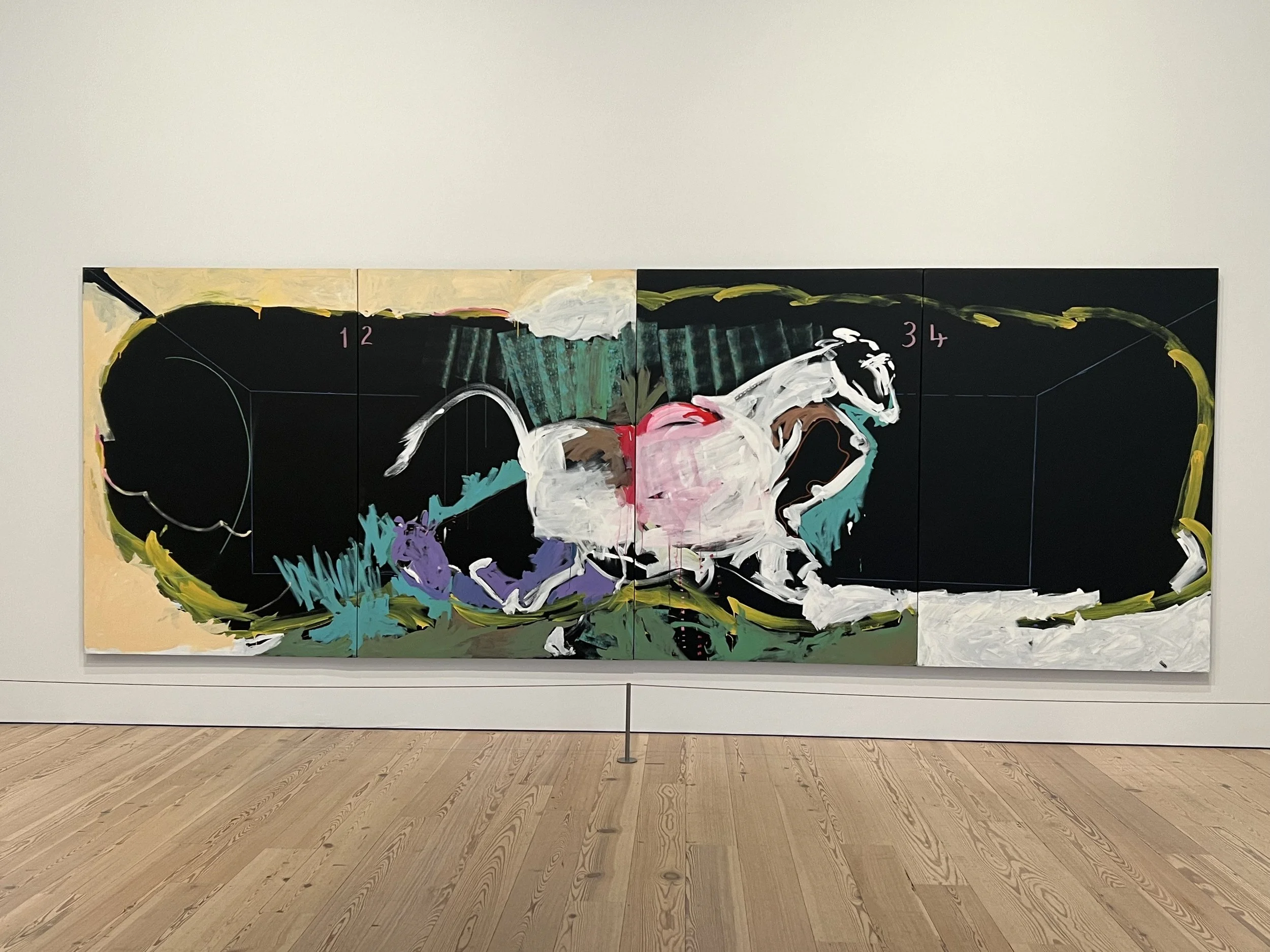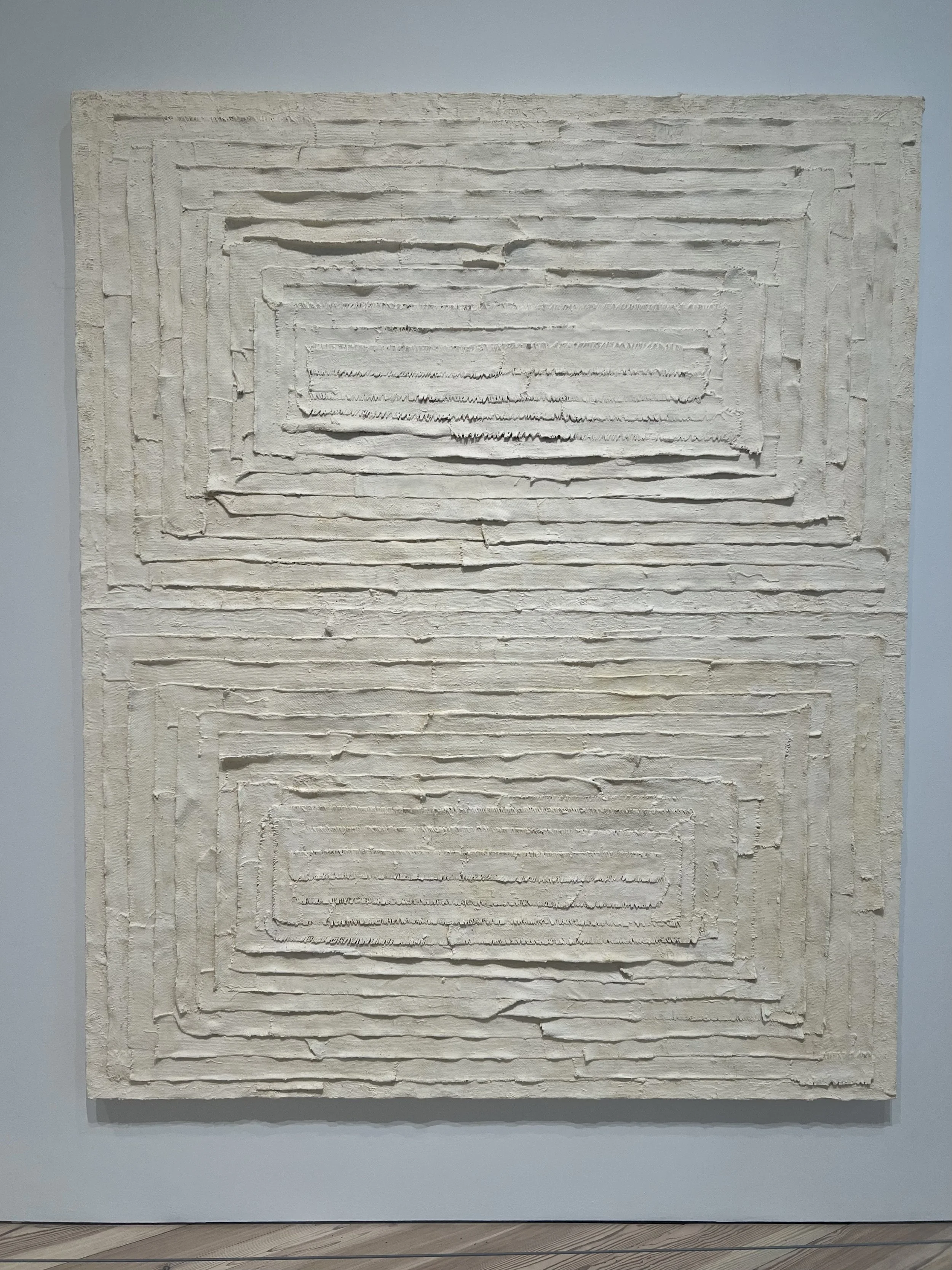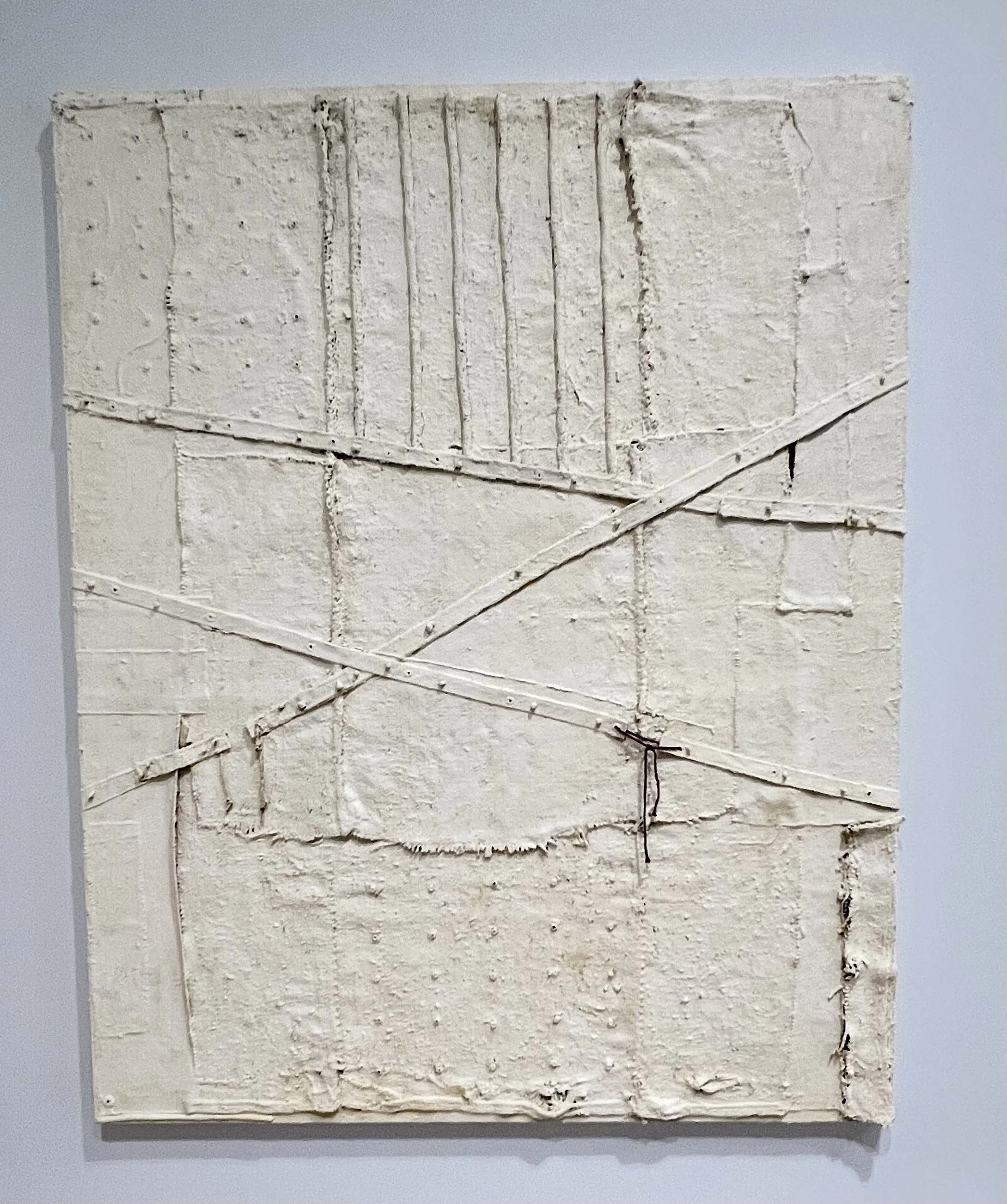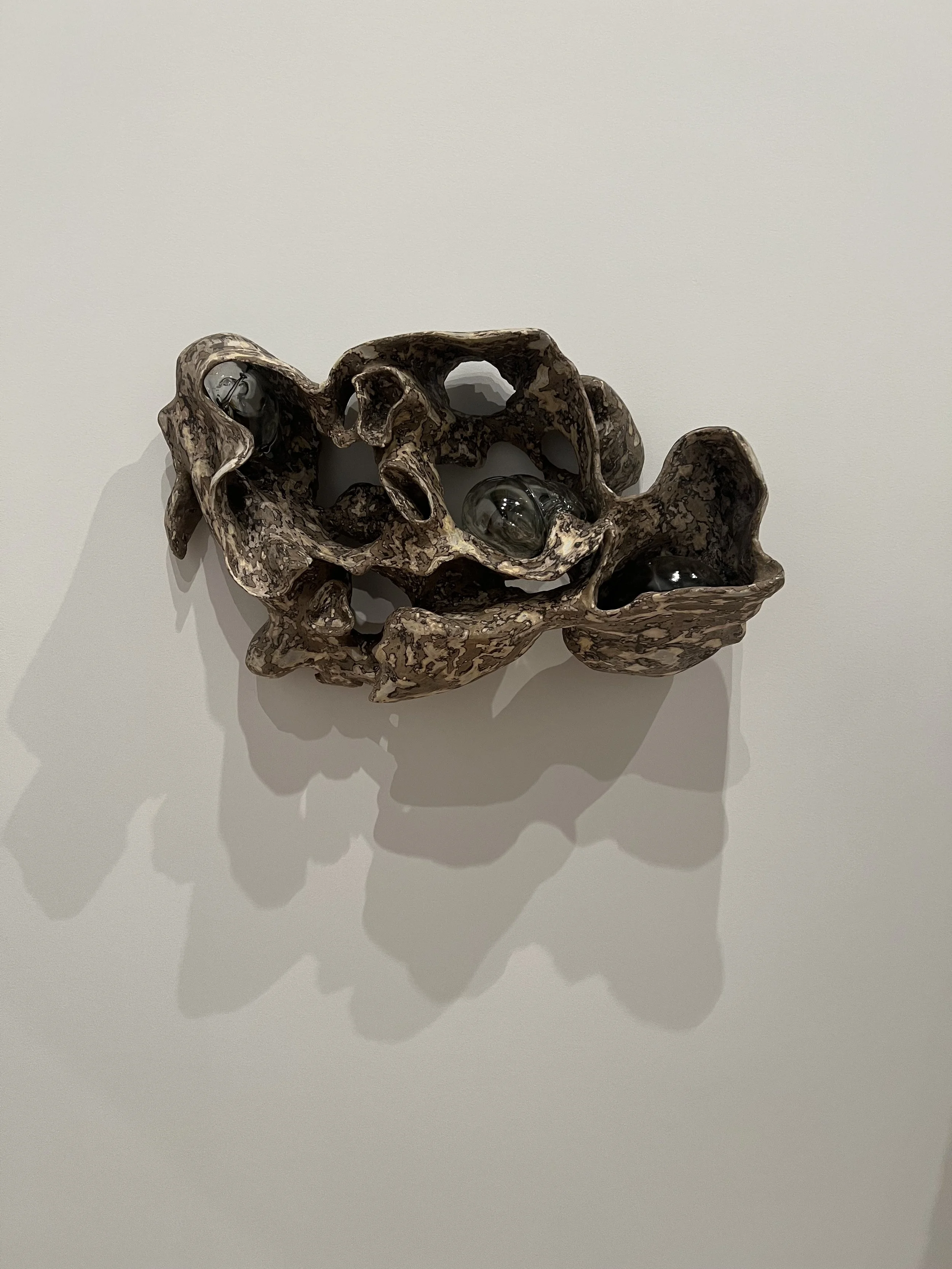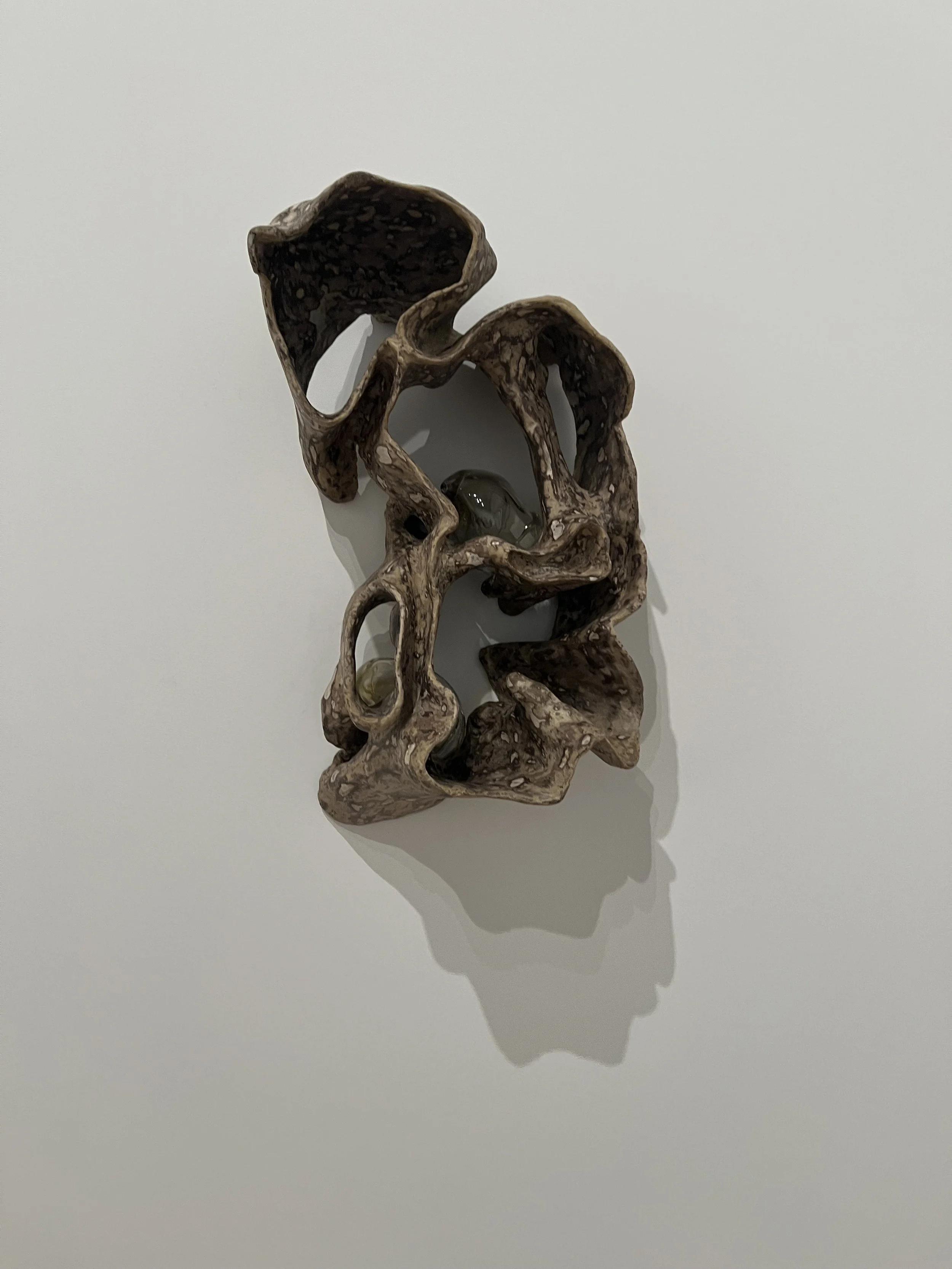A trip to The Whitney
In the beginning of May, I had a chance to visit the Whitney in New York City. It was actually the same time as the Whitney Biennial, but what caught me attention were pieces that were not part of the Biennial.
Mary Lovelace O’Neal
The colors and the brushstrokes are what initially caught my attention. It’s a tangible story telling that you can feel.
The card next to the work:
Mary Lovelace O’Neal began the series that includes Blue Whale aka #12 (from the Whales Fucking series), after two whales caught her imagination as she walked on a beach near San Francisco. “And watching them, I thought, imagine the tons and tons of water they must displace when they’re fucking!” It is this sense of excitement and desire on a grand scale, the energy of the light i their spray, that she worked to capture in paint-more than the image of the whale itself.
Such a dynamic, independent, sometimes slightly outrageous point of view has driven Lovelace O’Neal throughout her sixty-year career, which has unfolded alongside heated debates about what painting should or should not do and prescriptive views of Black artists and abstraction. While Lovelace O’Neal was deeply involved with the civil rights movement on a political level, she resisted calls to make representational paintings that would illustrate or inspire the struggle, insisting that forging her own path in abstraction - as she does in each of the paintings on view here- was equally relevant to Black life.
Harmony Hammond
As a self described “texture junkie,” I fell in love with these immediately. It may seem strange coming from someone who creates colorful work, but monochrome is near and dear to my heart. This sensibility was a huge influence during my college years and although it seems like a lifetime ago, works like these remind me of why I became a professional artist.
The card reads:
Over the course of five decades, Harmony Hammond has created a queer-feminist language of abstract art embedded in histories of weaving, sewing, quilting, naming, and the struggles of women. In Chaddle #17, the opposing colors of red and gold butt up against and stain the thickly painted white burlap surface, evoking a textile background with its tufts and ridges. Grommeted straps bind the painting like bandages.
In Patched, the repurposed and mended burlap foregrounds women's time and labor. Cotton squares painted with blood lie in the center of irregular squares formed by the oil paint, referencing the "reported and ongoing violences against women," (including the US Supreme Court's reversal of Roe v. Wade, and sexual assaults against women coded as a reminder of war). A grid of geometric holes below the small canvases not only suggests dying paper but also functions as a frame, suggesting the historical and material dimensions to the ongoing oppressions of women and healing.
Harmony Hammond describes these queer materials and processes can have their own sense of agency.
Jes Fan
These blow my mind- from concept to execution. It’s so organic, so interesting in how these were made. Sculpture is often the inspiration for my own work and the aesthetic that I seek.
The card reads:
For Jes Fan, the body is a site of making. The four sculptures here were created from 3D-printed CAT scans of his own body. The two wall-hung works map a cross section of his knee and hip muscles. The freestanding work Contrapposto is composed of one of his vertebrae, copied six times and draped over a metal structure, turning the skeleton inside-out to become the skin. Glass forms hand-blown by the artist and his team resemble body organs.
Gut, contouring the interior of the artist's stomach, is embedded inside the wall and only visible through three sculpted holes. The color palette and concept of all four sculptures were drawn from the Aquilaria sinensis—a species of incense tree from Hong Kong, where the artist was raised. When infected or wounded, the tree secretes a resin to heal itself.
In these sculptures, injury becomes an allegory of precious might be generated by invisible wounds borne by queer bodies and bodies of color.
Jes Fan describes the physical and conceptual layers of these sculptures.



